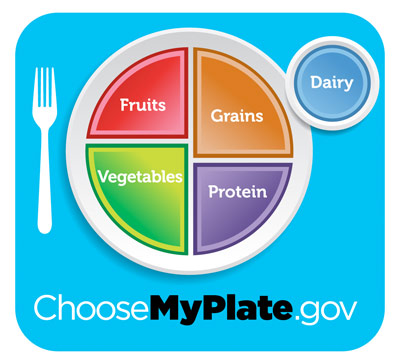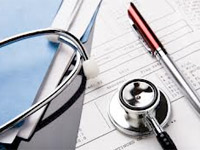 Getting balance back into meals and snacks will have immediate and long-term benefits.
Getting balance back into meals and snacks will have immediate and long-term benefits.
The secret of balanced meals and snacks is to enjoy a variety of nutrient-rich foods and beverages.
A healthy meal starts with more vegetables and fruits and smaller portions of protein and
grains.
Think about how you can adjust the portions on your plate to get more of what you need without too many calories. And don’t forget dairy – make it the beverage with your meal or add fat-free or low-fat dairy products to your plate.
Here’s how:
Start with Fruits and Vegetables
At lunch and dinner, divide your plate in half with an imaginary line and fill half with vegetables and fruits.
Add the Goodness of Whole Grains
On the other side of your plate’s imaginary line, add a serving of whole grains.
Minimally processed whole grains, like whole-wheat bread, multi-grain cereal, oatmeal, brown rice and whole-grain pastas, are also rich in nutrients, fiber and flavor.
For good health, you should make at least half of your grains whole.
Include the Power of Protein Foods
Lean beef, pork, fish, seafood, chicken, turkey, legumes (dried beans and peas) and fat-free or low-fat dairy foods (cheese, cottage cheese, yogurt and milk) are all good, healthy sources of protein.
Choose Beverages Wisely
Move away from sugary beverages with lots of calories and no nutrient value.
No one food group provides all the nutrients needed for good health. A variety of delicious foods from all food groups is the best way to meet your daily nutrition needs.
Download this handy PDF guide (source: myplate.com)

 The physical exam is an essential part of any doctor’s visit.
The physical exam is an essential part of any doctor’s visit. Experts and successful exercisers reveal the top tips and tricks they use to get the most from their fitness routines.
Experts and successful exercisers reveal the top tips and tricks they use to get the most from their fitness routines.